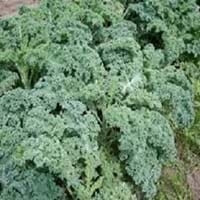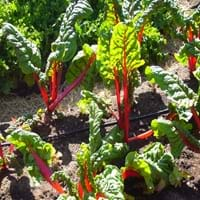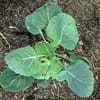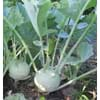Life Span
Annual
Biennial or Perennial
Origin
Southern Europe, Western Europe, Mediterranean
Europe
Types
Not Available
Leaf beet, Seakettle beet, Spinach beet
Habitat
gardens, Tropical regions
Cultivated Beds
USDA Hardiness Zone
2-11
4-8
Sunset Zone
A1, A2, A3, H1, H2, 1a, 1b, 2a, 2b, 3a, 3b, 4, 5, 6, 7, 8, 9, 10, 11, 12, 13, 14, 15, 16, 17, 18, 19, 20, 21, 22, 23, 24
A1, A2, A3, H1, H2, 1a, 1b, 2a, 2b, 3a, 3b, 4, 5, 6, 7, 8, 9, 10, 11, 12, 13, 14, 15, 16, 17, 18, 19, 20, 21, 22, 23, 24
Habit
Clump-Forming
Clump-Forming
Flower Color
Yellow
Red, Green
Flower Color Modifier
Bicolor
Bicolor
Leaf Color in Spring
Dark Green
Dark Green, Green, Orange, Red, White, Yellow
Leaf Color in Summer
Blue Green
White, Yellow, Red, Green, Orange, Dark Green
Leaf Color in Fall
Blue Green
White, Yellow, Red, Green, Orange, Dark Green
Leaf Color in Winter
Blue Green
Not Available
Leaf Shape
Round
Heart-shaped
Plant Season
Spring, Summer, Fall, Winter
Spring, Summer, Fall, Winter
Sunlight
Full Sun, Partial Sun
Full Sun
Type of Soil
Loam, Sand
Loam, Sand
The pH of Soil
Acidic, Neutral
Neutral, Alkaline
Soil Drainage
Well drained
Well drained
Bloom Time
Spring, Late Spring, Early Summer
Late Spring, Early Summer, Summer
Tolerances
Drought
Drought
Where to Plant?
Ground
Ground
How to Plant?
Seedlings
Seedlings
Plant Maintenance
Medium
Medium
Watering Requirements
Keep the ground moist but not water-logged, Water occasionally, Water twice a day in the initial period
Average Water Needs
In Summer
Lots of watering
Lots of watering
In Spring
Moderate
Moderate
In Winter
Average Water
Average Water
Soil pH
Acidic, Neutral
Neutral, Alkaline
Soil Type
Loam, Sand
Loam, Sand
Soil Drainage Capacity
Well drained
Well drained
Sun Exposure
Full Sun, Partial Sun
Full Sun
Pruning
Remove damaged leaves, Remove dead branches, Remove dead leaves
Remove damaged leaves, Remove dead branches, Remove dead leaves
Fertilizers
All-Purpose Liquid Fertilizer
Apply 10-10-10 amount
Pests and Diseases
Red blotch
Cercospora leaf spot, Damping off, Darkling beetles, Downy mildew
Plant Tolerance
Drought
Drought
Flowers
Showy
Insignificant
Flower Petal Number
Single
Not Available
Foliage Texture
Bold
Coarse
Foliage Sheen
Matte
Glossy
Allergy
Skin irritation
dark circles, Diarrhea, Runny nose, Vomiting, wheezing
Aesthetic Uses
Not Used For Aesthetic Purpose
Ground Cover
Beauty Benefits
Not Available
Moisturizing, Remove blemishes, Slow downs aging, Speed hair growth
Environmental Uses
Air purification
Air purification
Medicinal Uses
Not Available
Antitumor, Carminative, Haemostatic, Stomachic, Tonic
Part of Plant Used
Whole plant
Leaves, Root
Other Uses
Used as Ornamental plant
Cultivated for fodder, Eaten as a pot herb, Used to make juice
Used As Indoor Plant
No
No
Used As Outdoor Plant
Yes
Yes
Garden Design
Bedding Plant, Container, Edging, Edible, Herb / Vegetable, Mixed Border
Bedding Plant, Container, Edible, Herb / Vegetable, Mixed Border
Botanical Name
BRASSICA oleracea 'Blue Ridge'( Acephala Group)
BETA vulgaris ssp. cicla
Common Name
Kale
Swiss Chard
In Hindi
गोभी
Swiss Chard
In German
Grünkohl
Swiss Chard
In French
Chou frisé
Chard suisse
In Spanish
Col rizada
Acelgas
In Portuguese
Couve
Acelga suíça
In Polish
Kapusta włoska
Boćwina
In Latin
kale
Swiss Chard
Phylum
Magnoliophyta
Magnoliophyta
Class
Magnoliopsida
Magnoliopsida
Order
Brassicales
Caryophyllales
Family
Brassicaceae
Chenopodiaceae
Clade
Angiosperms, Eudicots, Rosids
Angiosperms, Core eudicots, Eudicots
Tribe
Not Available
Cyclolobeae
Subfamily
Not Available
Betoideae
Number of Species
Not Available
Season and Care of Kale and Swiss Chard
Season and care of Kale and Swiss Chard is important to know. While considering everything about Kale and Swiss Chard Care, growing season is an essential factor. Kale season is Spring, Summer, Fall and Winter and Swiss Chard season is Spring, Summer, Fall and Winter. The type of soil for Kale is Loam, Sand and for Swiss Chard is Loam, Sand while the PH of soil for Kale is Acidic, Neutral and for Swiss Chard is Neutral, Alkaline.
Kale and Swiss Chard Physical Information
Kale and Swiss Chard physical information is very important for comparison. Kale height is 45.70 cm and width 30.50 cm whereas Swiss Chard height is 30.00 cm and width 30.50 cm. The color specification of Kale and Swiss Chard are as follows:
Kale flower color: Yellow
Kale leaf color: Dark Green
Swiss Chard flower color: Red and Green
- Swiss Chard leaf color: Dark Green, Green, Orange, Red, White and Yellow
Care of Kale and Swiss Chard
Care of Kale and Swiss Chard include pruning, fertilizers, watering etc. Kale pruning is done Remove damaged leaves, Remove dead branches and Remove dead leaves and Swiss Chard pruning is done Remove damaged leaves, Remove dead branches and Remove dead leaves. In summer Kale needs Lots of watering and in winter, it needs Average Water. Whereas, in summer Swiss Chard needs Lots of watering and in winter, it needs Average Water.





